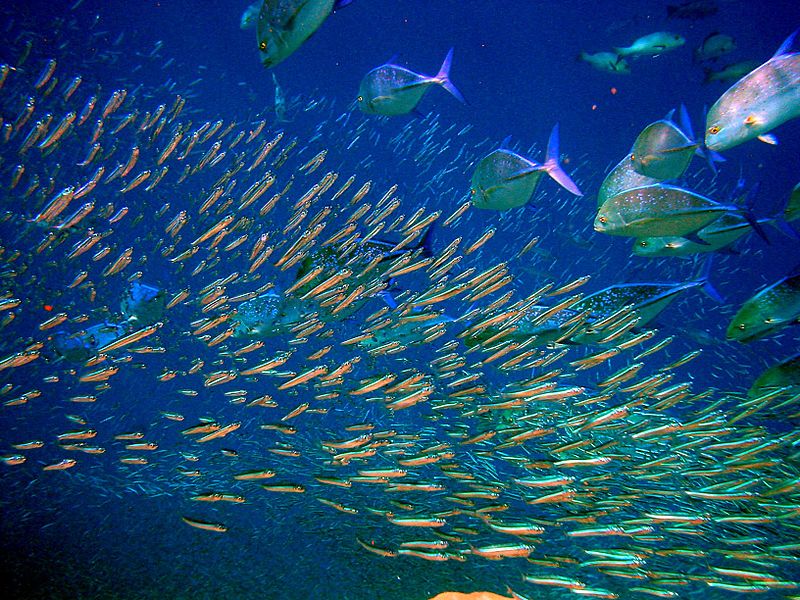How Schools Of Fish Can Lead To More Efficient Wind Farms

A new source of inspiration for wind farm engineers has come from an unlikely place: the sea. By imitating schools of fish, engineers can increase wind farm output--potentially getting up to 10 times more power from the same site compared to traditional wind farms.
The biomimicry news comes from a Caltech study (PDF) in the Journal of Renewable and Sustainable Energy, which examined a test array in the California desert that used vertical axis wind turbines (they look like spinning eggbeaters) laid out based on the fluid dynamics of schools of fish.
Today's standard horizontal axis turbines--the propeller-like objects that are most often seen on wind farms--have to be spaced far apart in order to work correctly. This means that the wake generated by one of the giant turbines can interfere with the aerodynamics of neighboring turbines, leading to wasted wind energy. The problem can partially be solved with bigger blades and taller towers that can capture the wind gusts found at higher altitudes--but bigger turbines have other problems, including increased noise and more danger for birds and bats.
Caltech explains:
The solution, says [study researcher John] Dabiri, is to focus instead on the design of the wind farm itself, to maximize its energy-collecting efficiency at heights closer to the ground. While winds blow far less energetically at, say, 30 feet off the ground than at 100 feet, "the global wind power available 30 feet off the ground is greater than the world’s electricity usage, several times over," he says. That means that enough energy can be obtained with smaller, cheaper, less environmentally intrusive turbines--as long as they're the right turbines, arranged in the right way.
Vertical axis wind turbines are well-suited to the task, because they can be placed close to one another and can capture wind energy from all directions--even from above. By having every turbine placed in the opposite direction of its neighbor, Caltech researchers found that efficiency can be increased due to opposing spins lowering the drag on each turbine.
This is much like what is seen in schools of fish, which align themselves similarly to increase their forward propulsion. If there is just one fish swimming by itself, the energy kicked off into the water would be wasted. But if another fish is behind it, the follower can use the leader's kinetic energy to move forward.
Fish have inspired more than just better wind farms. Researchers at MIT, for example, areworking on energy efficient electronic screens that are based on cuttlefish camouflage, and a group at Case Western is using salmon to design better bridge stability sensors for floods.
[Hat tip: BBC]
[Image: Wikipedia]
No comments:
Post a Comment